A 1948 nickel without a mint mark was minted in Philadelphia. Circulated coins are typically worth 10-50 cents, while uncirculated examples range from $1 to $30. Premium specimens graded MS67+ with “Full Steps” can exceed $1,000. The “Full Steps” designation refers to five or six clearly defined parallel lines at Monticello’s base on the coin’s reverse, significantly increasing value. Most 1948 nickels remain valued under one dollar depending on condition and wear. Coins showing heavy circulation damage have minimal value, while pristine uncirculated pieces with no wear command higher prices among collectors.
That worn 1948 nickel in your change jar might seem ordinary, but certain specimens have sold for over $1,000 at auction. While most 1948 Jefferson nickels trade near face value, understanding mint marks, grading details, and error varieties can reveal whether you’re holding pocket change or a genuine collector’s piece. This guide breaks down exactly what determines a 1948 nickel’s worth across all three mints.
Understanding 1948 Jefferson Nickel Basics
The 1948 nickel represents a post-war production year when the U.S. Mint returned to standard 75% copper and 25% nickel composition after the wartime silver alloy period. Three facilities struck these coins: Philadelphia (no mint mark), Denver (D), and San Francisco (S). The mint mark appears on the reverse, to the right of Monticello.
Total production reached approximately 206 million pieces across all mints, making 1948 nickels relatively common in circulated grades. The Philadelphia facility produced 89,348,000 coins, Denver minted 44,734,000, and San Francisco contributed 11,300,000 pieces. This substantial mintage means circulated examples rarely command premiums, but exceptional uncirculated specimens tell a different story.
1948 No Mint Mark Nickel Values (Philadelphia)
Philadelphia-struck 1948 nickels without mint marks represent the highest production volume. In heavily circulated condition showing significant wear, these coins typically trade for 10 to 50 cents—essentially face value with minimal collector premium.
The value proposition changes dramatically in uncirculated grades. Here’s the current market breakdown based on 2023 Heritage Auctions and Professional Coin Grading Service (PCGS) data:
| Grade | Value Range |
|---|---|
| G-4 to F-12 | $0.10 – $0.25 |
| AU-50 to AU-58 | $0.50 – $2.00 |
| MS-60 to MS-63 | $1.00 – $5.00 |
| MS-64 to MS-65 | $8.00 – $18.00 |
| MS-66 | $25.00 – $75.00 |
| MS-67 | $150 – $400 |
| MS-67+ Full Steps | $1,000 – $2,500 |
The real game-changer is the “Full Steps” designation. This refers to the complete, unbroken horizontal lines representing Monticello’s front steps on the coin’s reverse. Most 1948 nickels show weak or incomplete step definition due to die wear during striking. Coins displaying five or six fully separated steps receive the FS-5 or FS-6 designation from grading services, multiplying values significantly.
A 1948 Philadelphia nickel graded MS-67 with Full Steps sold for $2,280 at a January 2023 Heritage Auctions sale. Without Full Steps, comparable MS-67 examples bring $200-$400. This dramatic difference makes step clarity the single most important value factor for high-grade specimens.
1948-D Nickel Worth (Denver Mint)
Denver’s 1948-D production of 44.7 million nickels makes these coins less common than Philadelphia strikes but still readily available. The “D” mint mark appears on the reverse to Monticello’s right.
Circulated 1948-D nickels follow similar value patterns to Philadelphia coins, trading at 10 to 60 cents in worn condition. The premium begins appearing in mint state grades:
| Grade | Value Range |
|---|---|
| G-4 to VF-20 | $0.10 – $0.40 |
| AU-50 to AU-58 | $0.75 – $3.00 |
| MS-60 to MS-63 | $2.00 – $8.00 |
| MS-64 to MS-65 | $12.00 – $28.00 |
| MS-66 | $40.00 – $125.00 |
| MS-67 | $200 – $600 |
| MS-67+ Full Steps | $1,500 – $3,500 |
Denver mint nickels from this era often show slightly better strike quality than Philadelphia coins, making Full Steps examples somewhat more obtainable—though still rare. A 1948-D graded MS-67+ FS-6 brought $3,120 at a Stack’s Bowers March 2023 auction, while a non-Full Steps MS-67 sold for $456 in the same sale.
The survival rate for high-grade 1948-D nickels remains low. PCGS population reports show only 47 specimens graded MS-67 or higher with Full Steps designations as of late 2023, compared to hundreds of MS-65 and MS-66 examples.
1948-S Nickel Value (San Francisco)
The 1948-S nickel carries the lowest mintage of the three varieties at 11.3 million pieces, making it the scarcest in absolute numbers. The “S” mint mark appears in the same location as the Denver mark.
Despite lower production figures, 1948-S nickels don’t command significant premiums in circulated grades, still trading at 15 cents to $1.00 for worn examples. Collectors prize San Francisco mint coins primarily in uncirculated condition:
| Grade | Value Range |
|---|---|
| G-4 to VF-35 | $0.15 – $0.75 |
| AU-50 to AU-58 | $1.50 – $5.00 |
| MS-60 to MS-63 | $3.00 – $12.00 |
| MS-64 to MS-65 | $18.00 – $45.00 |
| MS-66 | $75.00 – $225.00 |
| MS-67 | $400 – $1,200 |
| MS-67+ Full Steps | $2,500 – $5,000 |
San Francisco nickels from 1948 present notorious striking challenges. Die spacing issues and production pressures resulted in weak step detail on most specimens. Fewer than 30 examples graded MS-67 or better with Full Steps exist in PCGS and NGC population reports combined.
A remarkable 1948-S MS-68 FS-6 sold for $9,400 at a Great Collections auction in October 2022—the auction record for any 1948 nickel variety. This exceptional piece represented years of searching by specialists, demonstrating how rarity and condition intersect to create extraordinary values.
Valuable Error Varieties to Find
Beyond mint marks and grades, error coins from 1948 offer collecting opportunities. Manufacturing anomalies during the high-volume postwar production created several recognized varieties.
Double Die Obverse (DDO): Minor doubling appears on some 1948 nickels, particularly on “LIBERTY” and the date. Pronounced examples showing clear separation in lettering trade for $25 to $150 in circulated condition, and $200 to $800 in uncirculated grades depending on doubling severity.
Off-Center Strikes: Coins struck off-center by 5-10% showing full dates maintain collectibility. A 1948-D nickel 8% off-center graded MS-63 sold for $180 in 2023. Dramatic off-center errors (30%+ with full date) can reach $400-$800.
Repunched Mint Marks (RPM): Denver and San Francisco coins occasionally show mint mark doubling where the punch was applied twice. The 1948-D RPM-001 variety, showing clear doubling southeast, trades at $15-$25 in AU grades and $75-$200 in uncirculated condition.
Clipped Planchets: Manufacturing clips from the blanking process create crescent-shaped missing sections. Straight clips (15-20% missing) on 1948 nickels bring $30-$75, while curved clips from overlapping blanks command $45-$125 depending on clip size and remaining coin detail.
Die Cracks and Cuds: Later die state coins showing raised lines (cracks) or rim defects (cuds) offer affordable error collecting. Small die cracks add $5-$15 to value, while dramatic cuds covering design elements can reach $50-$200.
How to Identify Full Steps Designation
Understanding Full Steps remains essential for maximizing 1948 nickel values. This designation requires five or six complete, unbroken horizontal lines at Monticello’s base, representing the building’s front steps.
Examine your nickel under good lighting with 5x-10x magnification focusing on the reverse. The steps appear as horizontal lines at the building’s foundation, above the denomination “FIVE CENTS.” Complete separation between each line is crucial—any merging or weakness disqualifies Full Steps designation.
Three factors determine step quality: strike pressure during minting, die condition when your coin was struck, and post-strike preservation. Early die state coins show the sharpest details before die wear erodes design elements. Even minor circulation wear on step edges eliminates Full Steps qualification.
Professional grading services apply strict standards. PCGS requires at least five fully separated steps for FS-5 designation, while six complete steps earn FS-6. The difference between FS-5 and FS-6 can mean hundreds of dollars in value for high-grade specimens.
Realistic expectations matter here: fewer than 1% of 1948 nickels in any grade meet Full Steps criteria. If your coin shows even slight step merging, it remains a regular strike. Don’t assume Full Steps without professional verification, as many sellers mistakenly self-designate coins that fail grading service standards.
Grading Your 1948 Nickel Accurately
Proper grading determines whether your 1948 nickel is worth 50 cents or $500. The Sheldon Scale from 1 to 70 establishes standard grades, with circulated coins ranging from Good (G-4) through About Uncirculated (AU-58), and uncirculated pieces from Mint State 60 (MS-60) to perfect MS-70.
Good (G-4) to Fine (F-12): Heavy wear flattens most design details. Jefferson’s hair shows no separation, and Monticello lacks architectural definition. These grades apply to well-worn pocket pieces worth face value to 25 cents.
Very Fine (VF-20) to Extremely Fine (EF-45): Moderate wear with major design elements visible. Jefferson’s cheekbone shows definition, and Monticello columns remain distinct. Worth 40 cents to $2.00 depending on specific grade and mint mark.
About Uncirculated (AU-50 to AU-58): Slight wear on highest points—Jefferson’s cheekbone and Monticello columns. Original mint luster remains in protected areas. Values range from $1.00 to $5.00 for common mint marks.
Mint State (MS-60 to MS-70): No circulation wear, though MS-60 to MS-62 may show bag marks and contact abrasions from handling at the mint. MS-63 represents choice quality with fewer marks, MS-65 shows gem quality with minimal imperfections, and MS-67+ approaches perfection.
Check for these MS-grade details: complete mint luster across surfaces, no wear on Jefferson’s cheekbone or hairline, sharp Monticello columns with visible window details, and full rim definition. Even minor friction on high points drops the coin from Mint State to About Uncirculated, significantly affecting value.
Professional grading through PCGS or NGC costs $20-$40 per coin but proves essential for pieces potentially worth $100+. Their third-party authentication prevents costly grading errors and provides market credibility when selling.
What Impacts Your 1948 Nickel’s Market Value
Beyond grade and mint mark, several factors influence what collectors actually pay for 1948 nickels. Understanding these elements helps set realistic price expectations.
Toning and Surface Quality: Original mint luster commands premiums over cleaned or retoned pieces. Natural toning in golden or light brown hues adds appeal, while dark, uneven, or artificial coloring reduces value by 30-50%. Never clean coins with abrasive materials—even gentle cleaning leaves microscopic scratches visible under magnification that disqualify Mint State grades.
Strike Quality: Well-struck coins showing full design details, especially on Monticello’s steps and columns, bring premiums even without official Full Steps designation. Weak strikes showing incomplete details trade at 20-40% discounts within the same grade.
Eye Appeal: Two coins with identical technical grades can vary significantly in price based on visual appeal. Clean fields, attractive luster, and minimal distracting marks create “premium quality” specimens commanding 15-30% more than typical examples.
Market Demand Cycles: Jefferson nickel collecting interest fluctuates. Strong collector activity in 2021-2022 pushed MS-67 Full Steps values 25-40% higher than 2019 levels. Current 2023-2024 markets show slight cooling, with top-grade specimens stabilizing at 10-15% below peak values.
Certification vs. Raw Coins: Professionally graded 1948 nickels in MS-65 or higher sell for 20-50% more than uncertified examples of equivalent quality due to buyer confidence in accurate grading and guarantee of authenticity.
Where to Buy and Sell 1948 Nickels
Finding the right marketplace affects both purchase price and selling success. Different venues serve different coin values and buyer types.
Online Auctions (eBay, Great Collections, Heritage Auctions): Best for coins worth $50+. Heritage Auctions and Stack’s Bowers handle premium specimens, regularly selling MS-67 Full Steps examples. Their buyer premiums run 17.5-20%, but serious collectors concentrate there. eBay works for $20-$200 coins, though authentication challenges require careful seller verification.
Coin Dealers: Local shops offer immediate transactions but typically pay 40-60% of retail value when buying. They’re efficient for circulated coins and lower Mint State grades where quick liquidity matters more than maximum price. For selling high-grade certified coins, dealers may offer 70-85% of CPG (Certified Price Guide) wholesale values.
Coin Shows: Major shows bring together specialists who pay stronger prices for quality material. Expect 10-20% better offers than local shops for uncirculated and error coins. Shows also provide networking with Jefferson nickel specialists seeking specific dates and varieties.
Online Marketplaces (PCGS CoinFacts, NGC Price Guide): These platforms provide current market values based on actual auction results and dealer listings. Use them for research before buying or selling. Many dealers list inventory directly through these services.
When selling valuable 1948 nickels (MS-66+, Full Steps, or significant errors), obtain multiple offers. Price variations of 15-30% between buyers are common, especially for conditionally rare specimens where few comparable sales exist.
Building a Complete 1948 Nickel Set
Assembling all three 1948 mint marks in Mint State condition creates an achievable collecting goal. MS-64 to MS-65 examples of all three varieties total $40-$90, making this an accessible set for intermediate collectors.
Start with the 1948-D, which offers the best combination of availability and strike quality. MS-64 examples consistently appear at $12-$18, and searching through dealer inventory or online listings finds choice specimens. Look for above-average luster and minimal bag marks on Jefferson’s cheek.
The 1948 no mint mark (Philadelphia) follows in difficulty. MS-64 pieces trade at $8-$15, with ample selection. Focus on examples with strong Monticello detail even without Full Steps designation—this indicates early die state and overall quality.
Complete your set with the 1948-S, the most challenging variety in high grades. Budget $18-$35 for MS-64 quality, and exercise patience finding well-struck examples. Many 1948-S nickels show weak strikes, so prioritize sharpness over saving $5-$10.
For advanced collectors, pursuing Full Steps examples across all three mints creates a significant challenge. Budget $1,500-$2,500 for MS-66 Full Steps specimens of each variety, with the 1948-S requiring the most searching. Fewer than 100 certified examples exist across all three mints in MS-66 FS or higher.
Protecting Your Investment
Proper storage preserves both condition and value. Never store valuable nickels in PVC-containing flips—these plastics emit chemicals that create green corrosion over time. Use inert Mylar holders or professionally certified slabs for coins worth $25+.
Environmental control matters significantly. Store coins in low-humidity environments (30-40% relative humidity) away from temperature fluctuations. High humidity promotes toning and potential corrosion, particularly on nickel alloy compositions.
Handle coins by edges only, avoiding contact with obverse or reverse surfaces. Skin oils contain acids that create fingerprints and toning over time. For uncertified Mint State coins, consider wearing cotton gloves during examination.
Insurance becomes relevant for collections exceeding $1,000 in value. Document your holdings with photographs and certification numbers. Homeowner’s policies typically cap coin coverage at $1,000-$2,000; specialized collectibles insurance through Hugh Wood Inc. or American Collectors Insurance provides proper coverage at approximately $1-$2 per $100 of insured value annually.
Expanding Beyond 1948: Series Collecting Strategies
Once you’ve mastered 1948 nickel varieties, the broader Jefferson nickel series (1938-present) offers extensive collecting opportunities. The series includes wartime silver composition coins (1942-1945), making it uniquely diverse among modern U.S. denominations.
Consider assembling a complete date and mint mark set from 1938-1964 in circulated condition—approximately 60 coins totaling $50-$150 depending on grade uniformity. This builds knowledge about mint mark locations, design varieties, and historical context across different production periods.
Alternatively, specialize in Full Steps collecting across multiple years. This advanced pursuit focuses on strike quality rather than simple date completion. Building a Full Steps type set from the 1940s and 1950s creates both challenge and value, with many dates significantly rarer in FS designation than others.
Error variety collecting represents another specialization path. Jefferson nickels feature numerous recognized doubled dies, off-center strikes, and repunched mint marks across decades. The 1939 Doubled Monticello, 1943-P 3-over-2 overdate, and 1954-S S-over-D varieties offer famous examples commanding substantial premiums.
Professional Authentication for High-Value Pieces
Certification through PCGS or NGC becomes essential when your 1948 nickel might grade MS-66 or higher, or displays potential error characteristics. The $30-$45 grading fee pays for itself when certification confirms MS-67 status worth $200-$400 versus self-graded MS-66 worth $50.
Submit through authorized dealers or directly via grading service websites. Choose appropriate service levels: economy service ($20-$30, 30-45 day turnaround) works for coins worth $100-$500, while express service ($75-$100, 5-10 days) suits valuable discoveries or time-sensitive selling needs.
Request Full Steps review when submitting 1948 nickels with apparent complete step separation. This additional review ($10-$15) provides official FS-5 or FS-6 designation if warranted. Without specific request, graders may assign regular grades even to Full Steps-qualified coins.
Understand population reports after certification. PCGS and NGC publish total numbers of each coin graded at each level. Low population numbers (under 50 specimens) in your coin’s specific grade indicate condition rarity that supports strong pricing. Check these reports at pcgs.com/coinfacts and ngccoin.com before pricing your certified coin.
Turning Knowledge Into Profit
Armed with this complete understanding of 1948 nickel values, you can approach buying and selling strategically. Focus acquisition efforts on undervalued opportunities: MS-65 coins priced at MS-64 levels due to seller unfamiliarity, or raw coins in holders that might upgrade upon professional certification.
Build relationships with reputable dealers specializing in Jefferson nickels. These specialists pay fairly for quality material and often purchase entire collections, providing efficient exit strategies when your collecting interests shift.
Track auction results through Heritage Auctions’ Coin Archives, which provides free access to realized prices for tens of thousands of past sales. This research reveals actual market values versus optimistic price guide listings, preventing overpayment when buying and unrealistic expectations when selling.
Your 1948 nickel represents more than five cents—it’s a tangible connection to post-war American history, a lesson in numismatic grading standards, and potentially a profitable collecting opportunity. Whether you’re examining pocket change or building a specialized collection, understanding mint marks, Full Steps designation, and realistic market values transforms ordinary coins into informed investments.
You may be interested:
- 1859 Indian Head Penny Coin Value Complete Errors List And No Mint Mark Worth Guide For Collectors
- 1911 V Nickel Coin Value Guide Complete Errors List And No Mint Mark Worth Today
- 1902 Dime Coin Value Complete Errors List With O S And No Mint Mark Worth Guide
- 1788 Quarter Coin Value Complete Guide Errors List And D S P Mint Mark Worth Revealed
- 1776 To 1976 Bicentennial Half Dollar Coin Value Complete Errors List And What Your D S And No Mint Mark Coins Are Actually Worth
- 1990 Penny Coin Value Errors List How D S And No Mint Mark Pennies Are Worth Thousands Of Dollars

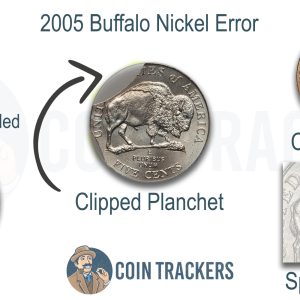
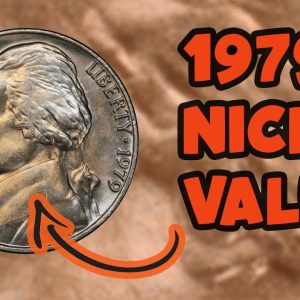
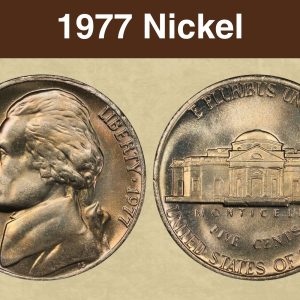
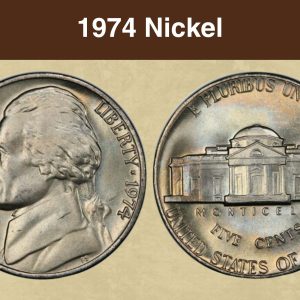
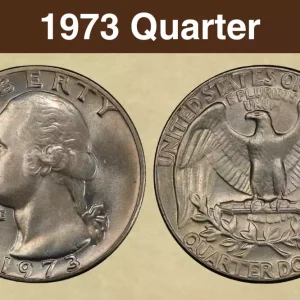
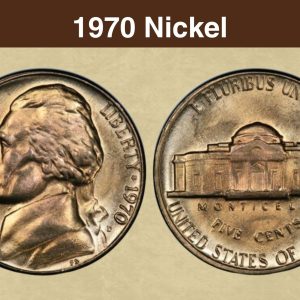
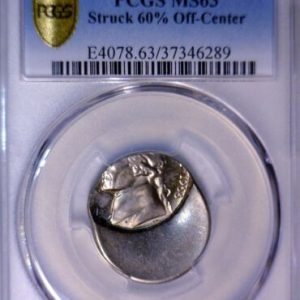
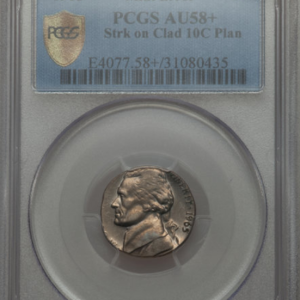
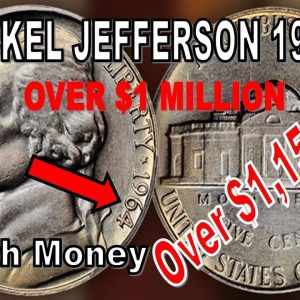
Is a 1948 nickel with no mint mark worth anything?
A 1948 nickel without a mint mark is a Philadelphia-minted coin. In circulated condition, it’s worth about 10–50 cents, while uncirculated examples range from $1 to $30. Coins in top condition (like MS67+ with “Full Steps”) can be worth $1,000 or more, but most are valued at or under a dollar.
What makes a 1948 nickel rare?
Last but not least, the factor that affects the value of 1948 nickels is their condition. Rarer than their circulated counterparts are coins of higher grades, particularly those in Mint State (MS) condition, which is obvious.
What errors do you look for on nickels?
Key nickel errors to look for include doubled dies, where design elements are doubled due to die strikes, off-center strikes, where the coin is struck outside its intended position, and mint mark errors, such as doubled or missing mint marks. Other valuable errors are speared bison on 2005 nickels, the 1943 double die Jefferson nickel, and 1937-D Buffalo nickel three legs.
What nickel is worth $10,000 no mint mark?
In 1942 at Philadelphia. They made no mintmark nickels but they were not 35% silver they had no silver in them they were the regular copper nickel composition.